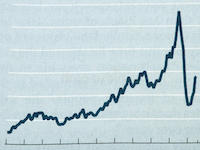To see the supporting documents, click here
Update 10/14/2023 –
Notes from GotChoices’ staff economist:
This update includes improvements to the R code used in the original study. With this improved version, anyone interested can obtain both most recent estimated CHIP value and the time series for that value without having to search and download data necessary for estimation. This is important because data on wages, labor hours, prices, capital and output gets regularly updated by relevant organization maintaining these data (International Labor Organization, St Louis FED, and the University of Pennsylvania).
The code has been rewritten to access public APIs of these three databases, extract the most recent data, and produce new CHIP valuations and update the time series. I suggest running the code at least once a year since first two out of three databases get regular updates. The main improvements in data is due to getting the more recent values, but new updates may also correct earlier data errors, and may add better quality historical data.
To run the code, the user needs to download R software from https://www.r-project.org/. R is completely free, and is preferred to Python by many economists and statisticians because it offers much better libraries for statistical estimation (though Python is catching up). I also strongly recommend downloading RStudio, the R native editor (also free), from https://posit.co/download/rstudio-desktop/, but R can also run from Visual Studio and many other editors, like Atom.
The updated code is very easy to run, and the only changes a user should make is to 1) uncomment lines in the beginning which install necessary libraries (called “packages” in R). For example remove the first # from line:
# install.packages("pwt10") # uncomment for the first time useand 2) update the path to output the CHIP values (R will put them in Excel format) by uncommenting and modifying the following line:
# setwd ("./CHIPS") uncomment this line to set your own working directoryFor convenience I have attached the time series sheet produced by the R code. The results confirm our earlier intuition that the CHIP value, expressed in Dollars, closely tracks Dollar inflation. This implies among other things, that the CHIP is a more stable measure of value. This is not surprising since productivity growth of unskilled labor in most of the world’s countries is slow.
To see the new supporting documents, click here.
